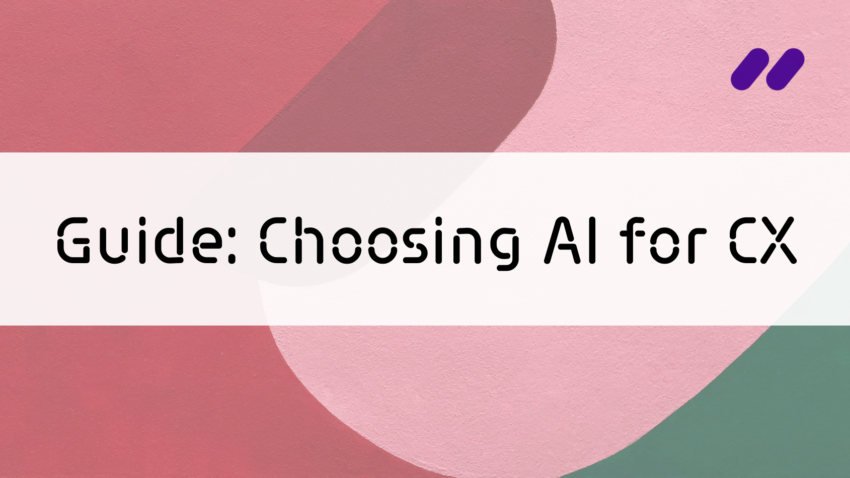On her way to the airport one day, Lynne Hunsaker appreciated getting a text from the airline. They had changed the departure gate for her flight to France. It was nothing to get flustered about, and it was good to know in advance. Calm and collected, she had no difficulty finding the proper departure lounge. “However, my luggage didn’t make it to Paris,” says Hunsaker, a thought leader in customer experience, known as CX—a burgeoning field that strives to keep the love alive between brands and their buyers.
“At some point during the eight-hour flight, the airline knew my luggage wasn’t on that plane,” notes Hunsaker. “So, why not send another text to let me know? That way, I could cool down and plan ahead.” Hunsaker, co-founder and Chief Customer Officer at Clear Action Continuum, had stumbled on an opportunity for the airline to improve their CX. A second text about the lost luggage would help manage customer expectations—a key player in customer satisfaction, maintaining positive word-of-mouth and building brand loyalty.
What’s CX? Do the math
The best way to define CX is to imagine an equation: take a customer’s expectations and subtract their reality (their luggage is lost). And expectations are growing. Thanks to web 2.0 and social media, people are able to share a high volume of feedback across many sources and channels. Think email, Twitter, Facebook, apps, call centres and help questions, among other communication tools. The ever-larger quantities of feedback fuel more ideas for improvements and eventually the improvements themselves, resulting in customers who have high expectations.
“It’s not about the evolution in technology, it’s about technology changing the expectations of customers, fast,” said Steven Van Belleghem, CX expert and author of Customers the Day After Tomorrow, while promoting his book. According to Van Belleghem, artificial intelligence (AI) is an important way to meet rising customer expectations. AI-enabled text analytics mines the avalanche of data by quickly categorizing and assessing large volumes of customer feedback.
Each time a customer is exposed to an improved digital experience, their expectations for all experiences are reset to a higher level.
Brendan Witcher, principal analyst at Forrester Research, couldn’t agree more. In a recent interview, he says, “Each time a customer is exposed to an improved digital experience, their expectations for all experiences are reset to a higher level.” Clearly, it’s go time. The race is on to meet, match and surpass those expectations.
Forrester, a pioneer in CX research, champions AI as an essential tool in the race. Their June 2018, paper on text analytics platforms concludes that the market is growing because more companies see turnkey solutions as the right way to address their top analytics challenges. This market growth is in large part due to an increased preference to buy rather than build their own in-house text analytics solutions. Moreover, Forrester notes that keyword-based analytics is outdated and less effective. Now, the focus is on extracting sentiments and concepts from customer feedback.
Text analytics: How AI and NLP change the game
The force behind the evolution of AI-driven text analytics is Natural Language Processing. It uses a unique combination of algorithms to analyze digital text, such as customer product reviews, to learn the sentiment behind the literal meaning of the words. For example, “sucks” isn’t necessarily bad if you’re analyzing feedback from customers who just bought a vacuum. NLP means not having to explain the context—or the joke.
 Narjès Boufaden, the CEO of Montreal-based Keatext, is a computer science engineer with a PhD in NLP. “With old-school text analytics, companies had to come up with 20 or 30 keywords to search. That isn’t good enough anymore,” notes Boufaden, who works with clients like American Express and NASA. “AI identifies the important words on its own, learning in context without the need for anyone to customize a vocabulary of relevant words or phrases for each industry. Then it points to ‘weather vane’ issues you don’t even know exist. It uncovers new insights and new client needs.”
Narjès Boufaden, the CEO of Montreal-based Keatext, is a computer science engineer with a PhD in NLP. “With old-school text analytics, companies had to come up with 20 or 30 keywords to search. That isn’t good enough anymore,” notes Boufaden, who works with clients like American Express and NASA. “AI identifies the important words on its own, learning in context without the need for anyone to customize a vocabulary of relevant words or phrases for each industry. Then it points to ‘weather vane’ issues you don’t even know exist. It uncovers new insights and new client needs.”
How, exactly? When a client supplies a list of keywords, they’re defining—and limiting—the problem areas beforehand. It’s a twist on the old saying, “If you only have a hammer, every problem looks like a nail.” In this case, what if there are nails you can’t see? “Deep learning and combining machine learning algorithms (i.e. AI) bypass this limitation,” says Boufaden. In other words, AI and NLP find the invisible nails.
“Reading” between the lines
The less tangible feedback data—the underlying sentiments—is critical. “We’re wired to be emotional creatures and that wiring won’t go away because we have technology,” says Adam Toporek, author of Be Your Customer’s Hero. “Those who are going to win with AI are the ones using it to manage customer emotions and expectations, as opposed to just trying to be more efficient.”
On the phone from Florida, Toporek scoffs at the suggestion that people may resist the idea of AI managing their expectations. “No! Customers only care about results and CX,” he concludes. “Take, for example, weather apps. Do you care that it’s not the weatherman? Of course not. You just want to know if it’s sunny outside.”
And if a customer’s luggage has been misplaced en route to Paris and they complain about it? Using AI-powered text analytics to leverage customer feedback, airlines can discover unexpected insights that will help them manage client expectations and increase brand loyalty. Isn’t that the name of the game?


